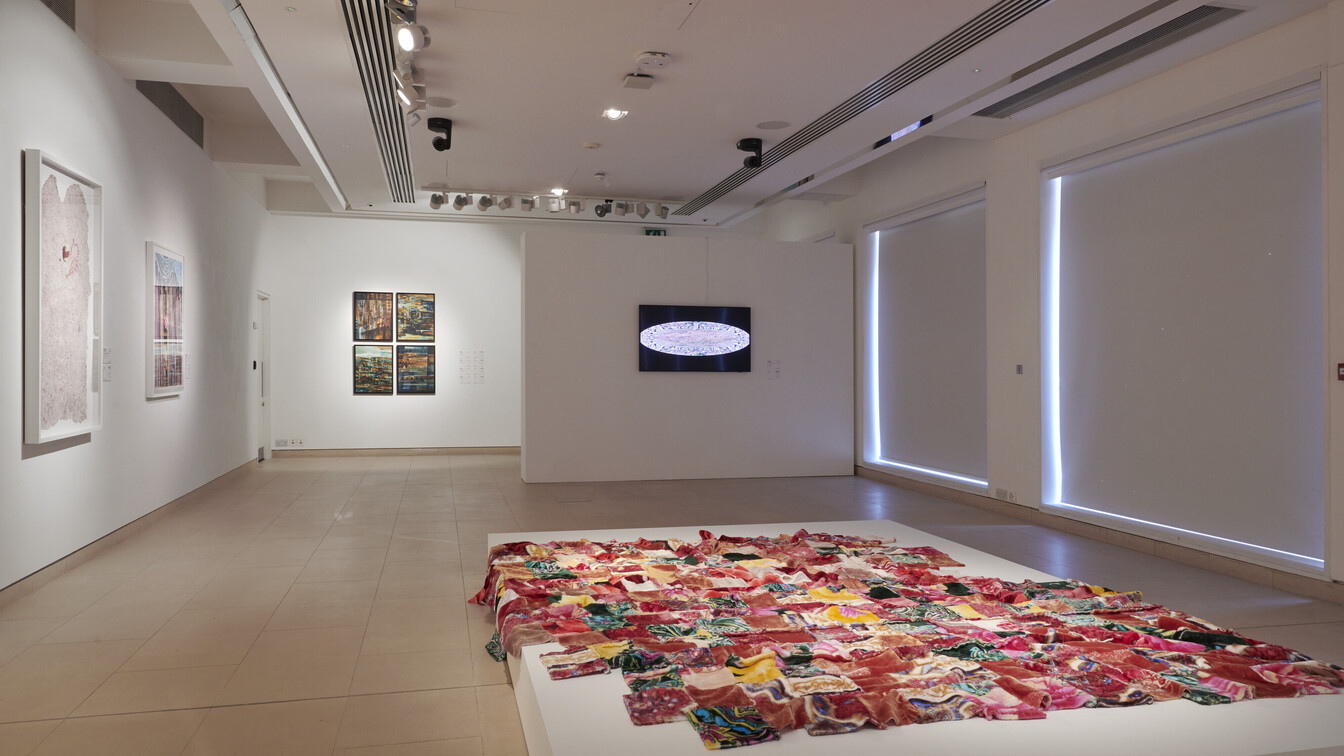

“We wanted to create a cultural bridge, a dialog mediated by modern and contemporary art from the Arab world. I am pleased to say that, to date, Christie's ‘Modern and Contemporary Art of the Arab World’ is the largest exhibition of art from the region ever presented in London.” Ridha Moumni, Deputy Chairman, Middle East and North Africa, Christie's, has a busy schedule of media appointments with the world's leading news outlets, from CNN to trade magazines. A historian of art and archaeology with an academic and professional specialization in antiquity and modern art, Ridha received his PhD in North African Roman architecture from La Sorbonne University before joining the Villa Medici, Rome, as a member of the French Academy.
Impressive museum projects are underway in Oman, Bahrain, Saudi Arabia, the Emirates and Qatar, with globally unique cultural dynamics, started 20 years ago, involving tourism, economy, international positioning with attraction of investment and intellectual excellence
Open until August 23 at the auction house's London headquarters in St. James's, the exhibition curated by Moumni is organized in collaboration with the UAE Ministry of Culture and Youth and the Barjeel Art Foundation. An extraordinary and gender balanced offering of modern and contemporary artworks from the Arab world from 1939 to 2023. This is one of the latest initiatives by Christie's, founded in 1766, with a physical presence in 46 countries, from the Americas to Asia Pacific, as well as being the only international auction house authorized to hold sales in mainland China, specifically in Shanghai.
“The Gulf region will be a major player in the international cultural scene within the next two generations. Impressive museum projects are underway in Oman, Bahrain, Saudi Arabia, the Emirates and Qatar, with globally unique cultural dynamics, started 20 years ago, involving tourism, economy, international positioning with attraction of investment and intellectual excellence.”
Christie's Middle East office was opened in Dubai in 2006 to satisfy the growing hunger for goods and events dedicated to art and culture, from exhibitions to ‘tailored’ acquisitions and consultations. And along with the demand comes increased pride in works, especially modern and contemporary, exquisitely local or from the Arab world, which are increasingly prominent in today's artistic panorama.
“There is a great openness and curiosity in the Arab world, without limits of time or space. We hold sales of all kinds here, of Islamic, Western, Far Eastern, modern and contemporary or ancient art. The luxury segments, from handbags to watches, are also very strong and attract more the younger clientele. This serves to emphasize that the quest to gain access to the market and collection of art, luxury, artistic or valuable items is not just about big fortunes, but an increasingly broad cross-section of the local population, both culturally and economically.”
What is also impressive in these parts is the great creative freedom in devising those new museums, temples of art and knowledge, that act as a great driver of the cultural vector. Abandoning the colonial legacy that incubated the foundation of the oldest and most prestigious international museums, from the British Museum to the Louvre, the different Gulf countries seem to rival each other in the boldness of their proposals.
Abu Dhabi offers a new Louvre and a Guggenheim currently under construction. In March, Saudi Arabia signed a partnership with France's Centre Pompidou to build a contemporary art museum in AlUla, a place with a history dating back thousands of years, part of the ancient Nabataean kingdom whose capital was Petra, already a destination for exclusive tourism. In Qatar, Sheikh Al-Mayassa bint Hamad bin Khalifa Al Thani, considered one of the most influential figures in the art world, has for years been engaged in art acquisitions capable of making the tiny country one of the world's future capitals for modern and contemporary art. In all cases, these are initiatives that are part of a specific governmental design, also intended to complement what is known as the ‘post-oil economy.’
“It is a time of great creative ferment, Qatar has announced five new museums, including the long-awaited Art Mill Museum of modern and contemporary art. Saudi Arabia works on AlUla, a densely symbolic place, an ancient beating heart. Each country is determined to impress visitors with something unique and inimitable, strongly distinguishing. But I would like to point out that already to date, from the Louvre in Abu Dhabi to the Museum of Islamic Culture in Doha, there is nothing comparable in the rest of the world.”
I cannot end our conversation without a mention of my interlocutor's perfect Italian. “I return to Italy on a regular basis. I feel at home in many cities. Rome, Villa Medici in particular, are my places of the soul.” Born in Tunisia, Moumni works (mostly) in English but his native language is Arabic. He tells me about his love for the Mediterranean and the region's very ancient cultural history. “It is the junction of three continents, and Italy is in some ways the hinge. The experience, the almost innate expertise of so many colleagues and professionals in the field, and the invaluable historical heritage you enjoy make you unparalleled in fulfilling cultural demands, which is something that is very highly valued in the Gulf.”